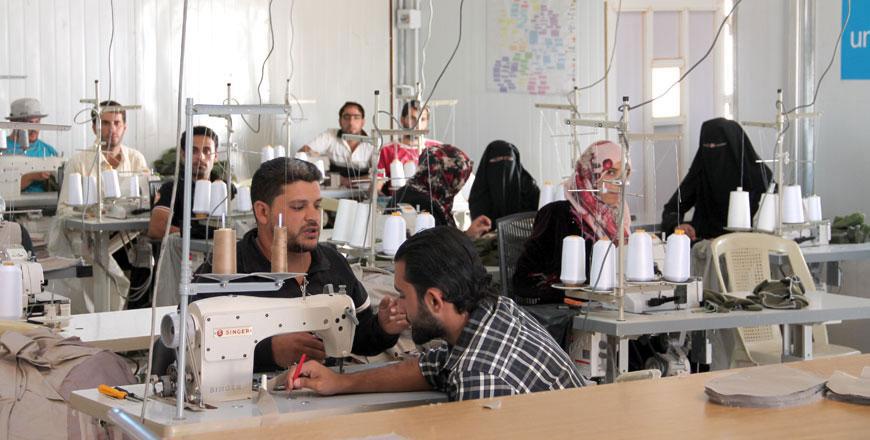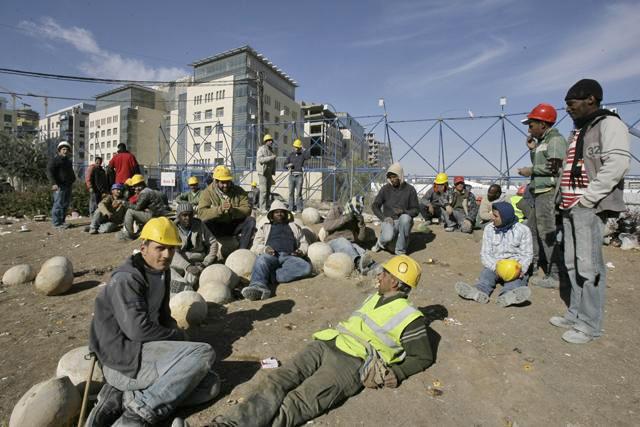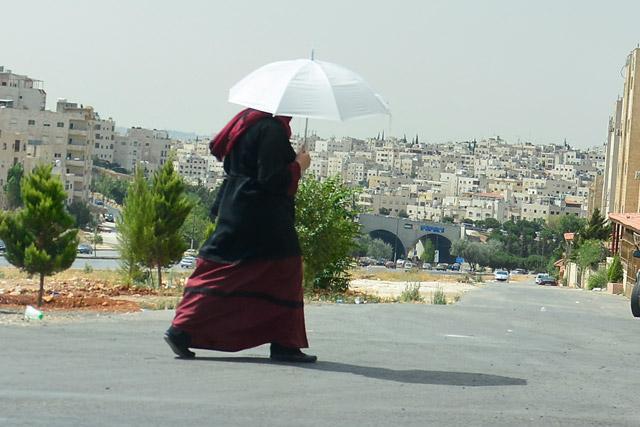You are here
Nearly 36% of Jordan’s labour income goes to top 10% of workers — ILO
By Elizabeth Turnbull - Jul 07,2019 - Last updated at Jul 07,2019

Workers are seen working in a garment factory in Mafraq Governorate, 80 kilometres northeast of Amman (JT file photo)
AMMAN — In 2017, 35.66 per cent of labour income in Jordan went to the top 10 per cent highest-paid workers, according to a recently released report by the International Labour Organisation (ILO).
"When the top 10 top-paid workers in Jordan hold more than 35 per cent of the local labour income, it means something is wrong with the equal pay system in Jordan," economist Mazen Irsheid told The Jordan Times on Saturday.
The top 10 per cent of workers in the world receive 48.9 per cent of total global pay and the bottom 50 per cent earn just 6.4 per cent, according to the Labour Income Share Distribution Dataset, which is the first study to provide global estimates of the distribution of labour income in an attempt to better understand inequality in the world, according to the ILO.
If labour income, or the money an individual earns from wages and not from assets, is perfectly distributed in a country, workers in the top 10 per cent would earn 10 per cent of the pay. Conversely, if there is complete inequality, and only the top-paid workers are paid for their labour, the top 10 per cent will earn 100 per cent of the pay, according to the ILO.
The economic situation in Jordan, which is revealed by the report, is partially due to an economic policy that focused mainly on economic growth as opposed to economic development, which meant that while the total wealth of society witnessed an increase, it became more concentrated in a small slice of society, according to Irsheid.
In order to further ask whether or not “workers [are] getting more or less of the economic pie”, the dataset illuminates the change from 2004 to 2016 in the percentage of labour income shares of GDP, or the percentage of total income that goes to workers as opposed to capital.
From 2004 to 2016, the percentage of the total income that went to workers increased by 1.8 per cent in Jordan, compared with a global decrease by 2.3 per cent, according to the report.
In Jordan, the labour income share was around 36.5 per cent, while the rest went to capital owners, while globally, the labour income share was 51.4 per cent in 2017.
Despite the relatively low percentage increase, Irsheid said he considers it good progress in the labour pay considering Jordan is one of the middle income countries.
“Many high-income countries in the chart posted [a] lower labour income percentage [increase], such as Canada, Austria and Qatar,” the economist added.
However, Jordan Labour Watch Director Ahmad Awad said that a 1.8-per cent increase in 12 years “is not a sufficient indicator that the situation of social inequality or wage inequality has improved in the country”.
“Reported wage segments indicate that inequality is high,” Awad noted, adding that “this new indicator [labour income] needs further analysis to understand its implications” and stressing that it is “one of the most important indicators to measure social inequality”.
Comparatively, workers in the UAE earned 12.8 per cent more of the total income from 2004 to 2016, 3.5 per cent more in Yemen and 2.3 per cent more in Iran, with Jordan being the fourth leading country in the region to increase the percentage of total income which is obtained by workers, according to ILO data.
Conversely, such a percentage did not change at all in Saudi Arabia, whereas it decreased in Syria, Qatar, Oman, Palestine and Egypt, where the labour income share dropped the most, with Egyptian workers getting 2.4 per cent less of the total income, according to the report.
Related Articles
AMMAN — Digital labour platforms (DLPs) can help alleviate unemployment among vulnerable groups in Jordan by providing them with access to s
AMMAN — Working conditions in the Kingdom remain "far from the decent work standards" and continue to deteriorate in several economic sector
AMMAN — The Kingdom is projected to experience a 0.1 per cent loss in working hours due to heat stress in 2030, one of the lowest decreases



















